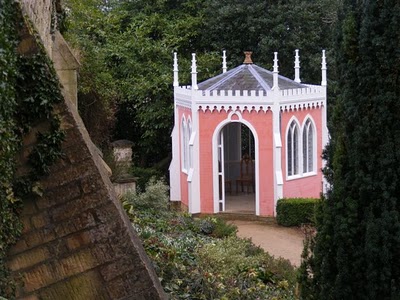The latter half of the summer is the silly season for journalism. During August, in particular, when legislative bodies are on break and the titans of finance are estivating in Gstaad, the papers are filled with stories about pie-eating contests, surfing dogs, and other similar bucolic follies. The evocative Swedish phrase for this indolent time is “rötmånadshistoria” which literally means rotting month—a time when every Swede is on holiday elsewhere and the forgotten leftovers rot in the fridge.
Well that is how it is supposed to be anyway. This summer the paper is filled with disasters. America’s leaders have collectively decided they would prefer to see the country ruined as long as the opposite party is blamed. US Government bonds have been downgraded. The markets are crashing. Darpa’s experimental scramjet is lost. London is on fire. Internecine wars grind on in west Asia. Bullet trains are crashing in China. Syria is taking another step on the road to genocidal civil war. This year seems like a dark literal version of rötmånadshistoria–in which everything is revealed to be rotten. The silliness is simmering over into madness.
Sadly there are no facile solutions for any of those problems here. This post is not meant to be a blueprint for fixing society, but rather a paean to the traditional summer silliness we should be enjoying. Instead of concentrating on the bad news, let’s pretend none of it is happening! Sit back, imagine that it is a traditional silly season, and enjoy this post dedicated to frivolity. In keeping with the finest tradition of Erasmus we will embrace absurdity and literally praise folly—or actually follies. So here is the first half of a two-part post concerning garden follies–extravagant ornamental structures intended solely for the amusement of bygone aristocrats. Such structures were expressly built not to be useful. Oftentimes follies were purposefully manufactured as ruins or were designed with a glaring structural anomaly—like a tower without stairs, or a greenhouse without windows. A folly was often the centerpiece of a large garden and tied together the disparate themes. Additionally, like powdered wigs, hoop skirts, and most other luxury goods, the very uselessness of a folly was testament to a nobleman’s power and prestige: he could afford to throw away princely sums on a decorative building.
Follies originated just prior to the 17th century. It was customary for gentlemen of that era to take a grand tour of southern Europe when they came of age. As they traveled through Italy and southern France these elite tourists were exposed to actual Roman ruins. When they returned to England or northern France they built copies of Greco-Roman temples to symbolize various classical virtues and ideals (which were already enshrined in the educational system of that time). Although the first wave of garden follies in the Seventeenth century was motivated by classical and religious ideas, the craze for extravagance and eccentricity deepened in the eighteenth and nineteenth centuries. As France and England reached the apogee of their economic power, the ruling classes of those nations went all out to show their taste, sophistication, and rank with increasingly lavish and increasingly novel garden architecture. Follies proliferated and took the shape of the eclectic pursuits of the lords commissioning them. An interest in the Levant filled England with orientalist fantasies. The gothic revival led to a host of spooky medieval towers and pseudo-crypts. The Earl of Dunmore, a Scottish Earl who loved tropical fruit commissioned an immense stone pineapple as a cupola for his hothouse.
Follies were meant to be beautiful and/or striking. Since they were designed specifically to be interesting ahead of all other concerns they often possess unique fantasy flourishes. In many cases the purpose of an architectural folly was to provide a direct allegorical lesson, however, even when no clear lesson was meant the structures clearly reflected the nature of human beliefs and desires…









4 comments
Comments feed for this article
August 11, 2011 at 11:21 PM
Diana
I love this post!! Also, I can’t believe a tent from the 18th century is still around.
August 12, 2011 at 3:33 PM
Hieronymo
I wondered about that tent too. Methinks somebody has been performing upkeep on their eighteenth century folly garden.
September 26, 2012 at 8:27 AM
Beatrix
Great post!
Reminds me of the megalomaniac tombs you see built by the Moghuls (and even a few Englishmen) in India.
(The Taj Mahal being the prime example.)
September 26, 2012 at 1:26 PM
Wayne
It’s shocking how extravagant tombs can be–especially considering they are an abode for the dead–but, then again, they are some of the most beautiful structures ever built. I have the same conflicted feelings about them as I do about follies.